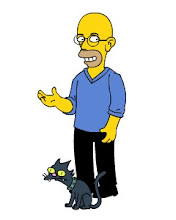
The novel begins with an incident involving Taylor and Turtle at the Hoover Dam that attracts the attention of the local press, and ultimately gets the pair onto an edition of Oprah. Afterwards, while they gradually slip back into their daily anonymous lives, the programme is seen by a young and ambitious Native American lawyer, Annawake Fourkiller. Seeing an echo of traumas from her own past in the life of Turtle, she tracks down and visits Taylor, who she puts the wind up of by questioning the irregularities of Turtle's adoption. Fearful of losing Turtle, Taylor takes her and goes on the run, abandoning her easy-going boyfriend, Jax. However, life on the road is more difficult than she anticipates, and their adventure quickly becomes a litany of temporary jobs and poverty line surfing. Meanwhile, Taylor's mother, Alice, attempts to track down Annawake to explore the legal alternatives on offer. Alice is helped by a blood connection to the Cherokee Nation, and family that coincidentally lives in the same Oklahoma town as Annawake. Further in the background, Cash, a Native American artisan tired of working in the tourist traps of Jackson, Wyoming, decides to return to home to Oklahoma to his tribe and whatever remains of his destroyed family there. Of his two daughters, one is an abused alcoholic long gone, while the other is dead, and he has no idea what became of his grand-daughter. With everyone converging on the Cherokee Nation in Oklahoma, there's a lot of scope for unanticipated meetings and endings.
In large part, the novel is very similar in texture and tone to its predecessor. Narratively, it shares the same multiple strand structure, although the connections are more obvious, so their binding together is more inevitable. Because it's a sequel, and because its central plotline (the possibly illegal adoption of Turtle) is identified early on, it's much more straightforward than The Bean Trees. While there are some unexpected developments along the way, where the novel ends up comes as no surprise. But this isn't a bad thing, and its a worthy sequel to the original novel.
However, it's still odd that the original novel was sequelised at all - it just isn't the sort of novel that one expects to see a follow-up for. My own (retrospective) theory is that the root of this novel is what appears a rather minor and glossed-over detail in The Bean Trees, the origin of Turtle. The first novel has a number of concerns, a major one being its commentary on events in Central America. That Turtle just happens to be of Native American descent is lost among these larger themes. C picked up on it, but I, not trained in even the less subtle aspects of equal opportunities, completely missed it (in my defense, Kingsolver really doesn't make a big deal of it). However, any Native American readers aren't likely to have seen it that way, and the adoption of one of their children by a white woman, however good-willed, is liable to have stirred up memories of events in this community. These are dealt with explicitly in Pigs In Heaven through the life history of Annawake, whose brother was "adopted" by a white family. Reading this, it's clear that what seemed a passing detail in The Bean Trees is actually an open wound for the Native American community. Now, given the way that The Bean Trees plays out, I doubt that Kingsolver originally intended to produce a sequel that picked this up. It seems more likely to me that her first novel inadvertently touched on this issue, producing a reaction that led to Pigs In Heaven. Having read several of her novels now, Kingsolver strikes me as someone who wouldn't let such a misstep lie, and would go out of her way to correct it, and draw attention to such a community-related issue.
With everything else that America stands for, good and bad, it's very easy to forget about the rich Native American cultures that were practically annihilated along the way. Having visited quite a bit of the US myself, I can certainly vouch that Native American culture is in large part invisible. So this novel acts as something of a salient corrective. It has certainly reminded me that while "red indians" seem a thing of the past, they emphatically aren't.
On an unrelated, astronomical sidenote, the eponymous Pigs in Heaven refer to the stars of the Pleiades, the Seven Sisters. It's explained in the novel that there are six pigs (one of the low magnitude Seven Sisters is dropped), and that they represent six lazy boys that were turned into pigs and cast into the heavens in a Cherokee legend.








No comments:
Post a Comment